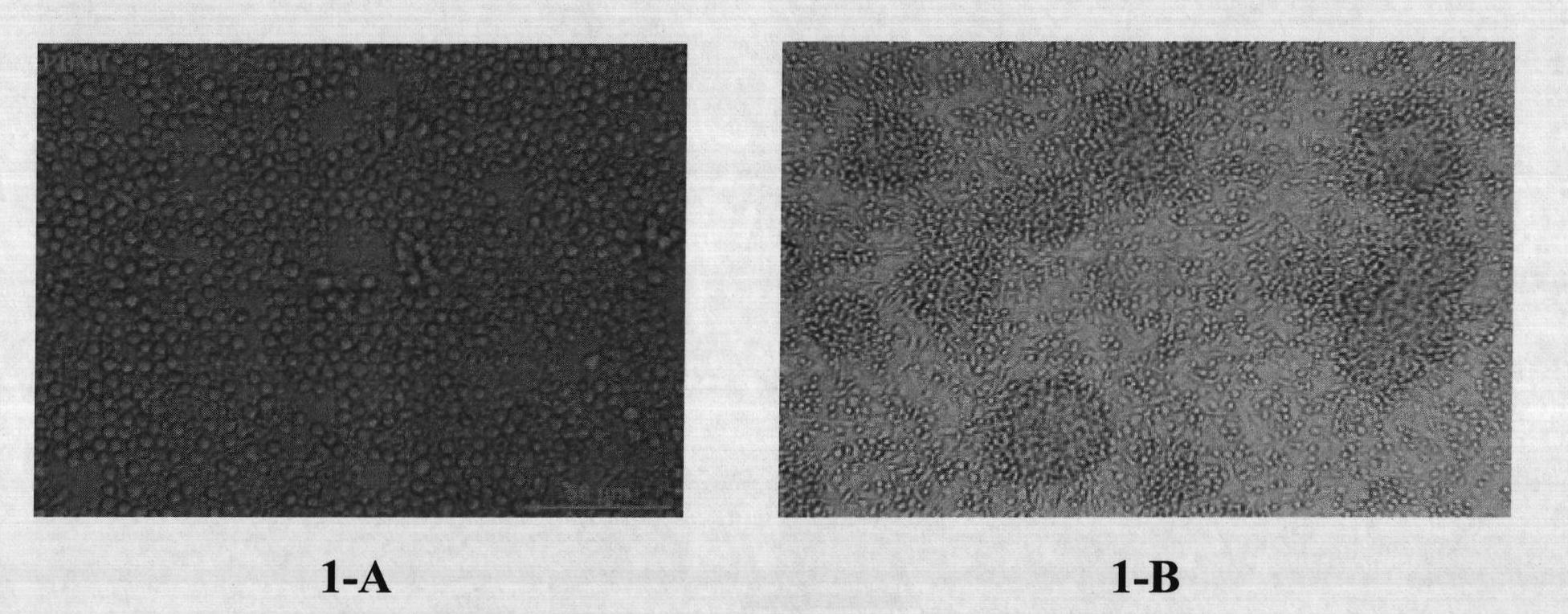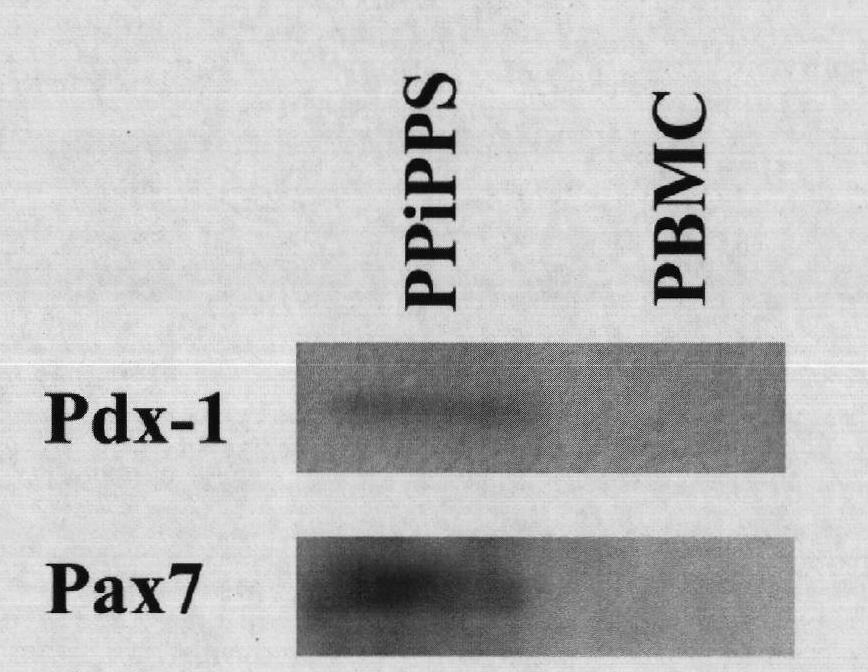Method and kit allowing reverse differentiation of human somatic cells for generation of autologous pancreatic stem cells and autologous pancreas islet, and application thereof
A technology of somatic cells and stem cells, applied in the field of biomedicine, can solve the problems of lack of donor tissue sources and loss of clinical effects
- Summary
- Abstract
- Description
- Claims
- Application Information
AI Technical Summary
Problems solved by technology
Method used
Image
Examples
Embodiment 1
[0064] Example 1: Production of plant and protein-induced pancreatic stem cells using peripheral venous blood / umbilical cord blood as raw material cells
[0065] Sterile collection of peripheral venous blood and umbilical cord blood (donated by scientific research staff, Beijing Wuzhou Women's Hospital, etc.). Before collecting peripheral venous blood / umbilical cord blood, the consent of the blood donor or his immediate family members should be obtained, and the genetic and infectious disease history of the blood donor and his family, as well as all relevant virus test results in the hospital should be recorded.
[0066] Peripheral venous blood / cord blood was routinely anticoagulated and stored at 4°C. Send to the stem cell production center within 24 hours. After the center needs to do the corresponding virus detection again, it will enter the computer registration procedure of the center, and after recording the corresponding barcode number, the blood sample will enter th...
Embodiment 2
[0071] Example 2: Using peripheral venous blood / umbilical cord blood as raw material cells to produce autologous islets
[0072] The plant and protein-induced autologous pancreatic stem cells obtained in Example 1 were differentiated to produce autologous islets.
[0073] After culturing in cell culture medium C2 to form plant and protein-induced pancreatic stem cells, use C3 cell culture medium to continue culturing for 9-12 days to form islets. The mononuclear cells of 200ml peripheral venous blood / 80ml umbilical cord blood can reach 0.6-1×10 in the 9th-12th day after culturing in cell culture medium C3, and the yield of plant and protein-induced pancreatic cells 11 .
[0074] The resulting autologous islets were tested. Cellular immunofluorescence technique was used to detect the expression of insulin protein (for details, refer to editor-in-chief of Shen Guan et al., "Modern Immunology Experimental Technology", 2nd edition, Hubei Science and Technology Press, 1998), an...
Embodiment 3
[0077] In this example, the safety research on the transplantation of plant and protein-induced autologous pancreatic stem cells prepared in Example 1 into nude mice is as follows.
[0078] In two groups of nude mice transplantation experiments, nude mice were subcutaneously transplanted and injected with 1×10 8 plant and protein-induced pancreatic stem cells or 1 x 10 8 Personal natural pancreatic stem cells (gifted by the Reproductive Center of Hainan Medical College) were used to observe whether there is tumor formation at the inoculation site. Continuous observation for 90 days.
[0079] The results showed that none of the 10 nude mice in the plant and protein-induced pancreatic stem cell test group developed tumors, which was relatively safe; while all the 10 nude mice in the human natural embryonic stem cell test group developed tumors.
PUM
 Login to View More
Login to View More Abstract
Description
Claims
Application Information
 Login to View More
Login to View More - R&D
- Intellectual Property
- Life Sciences
- Materials
- Tech Scout
- Unparalleled Data Quality
- Higher Quality Content
- 60% Fewer Hallucinations
Browse by: Latest US Patents, China's latest patents, Technical Efficacy Thesaurus, Application Domain, Technology Topic, Popular Technical Reports.
© 2025 PatSnap. All rights reserved.Legal|Privacy policy|Modern Slavery Act Transparency Statement|Sitemap|About US| Contact US: help@patsnap.com



